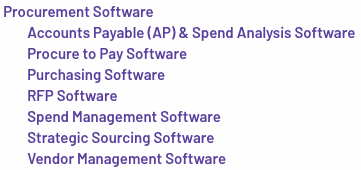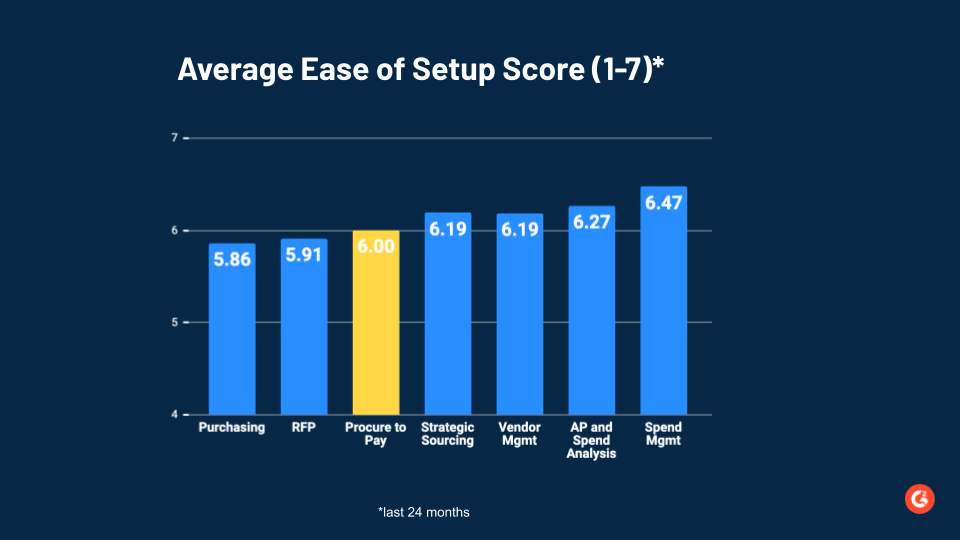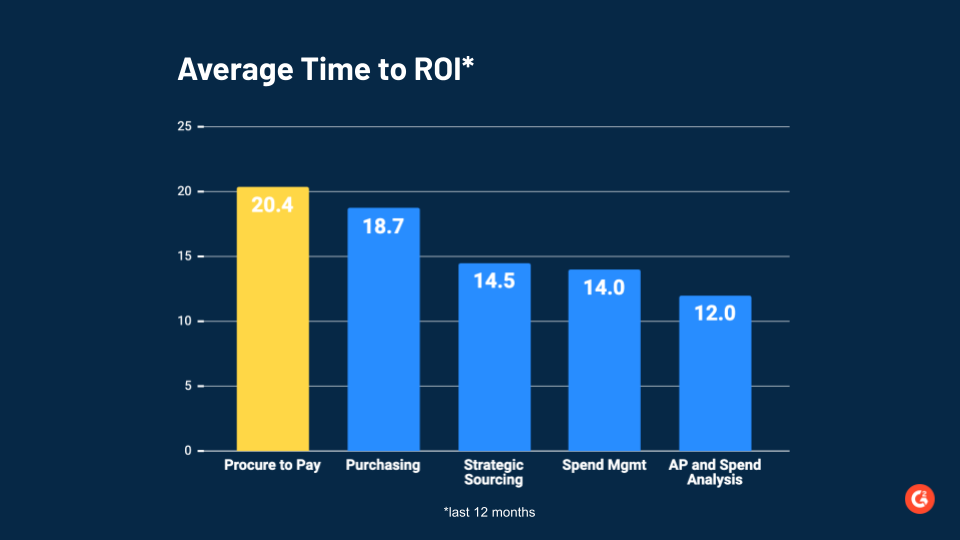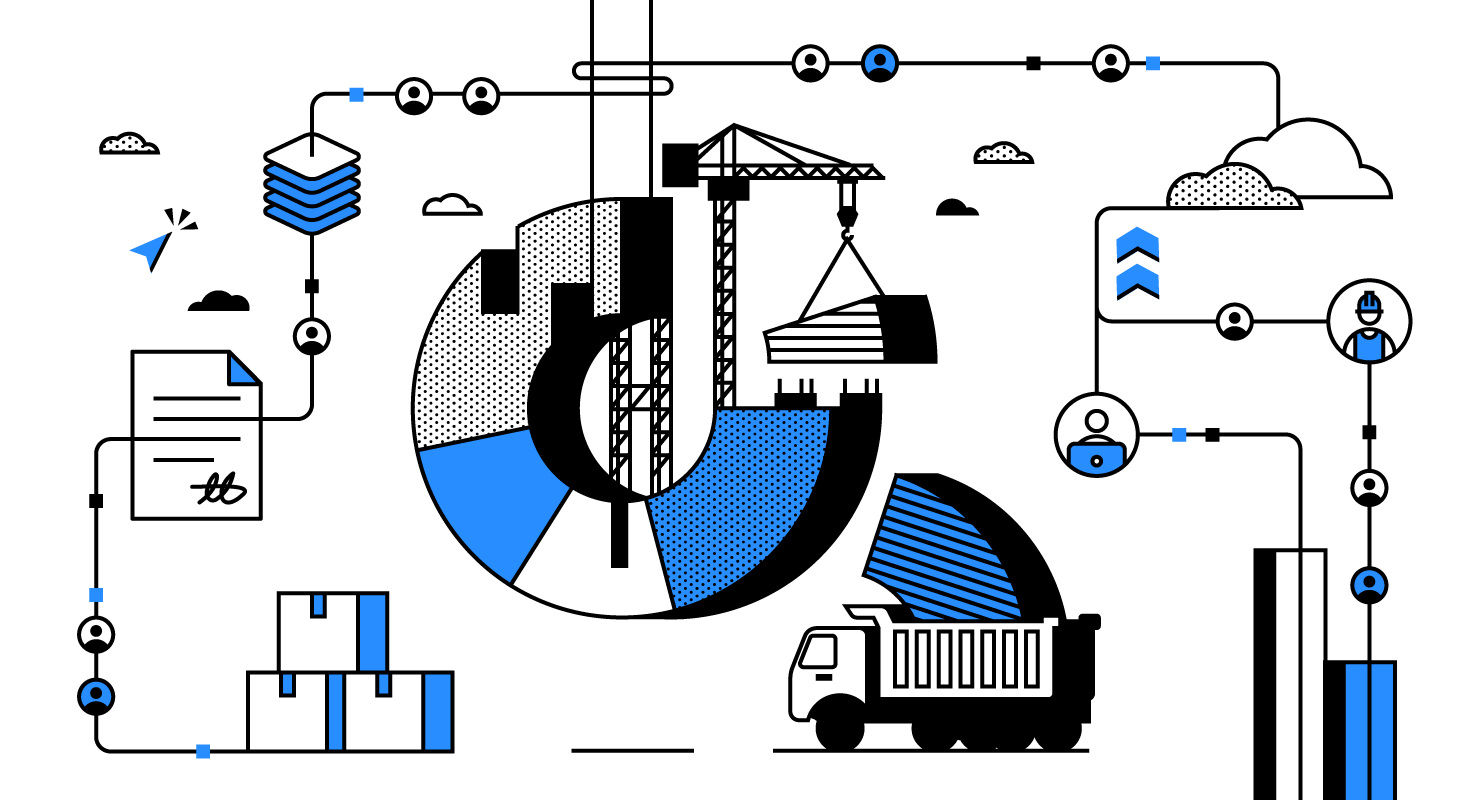This post is part of G2's 2023 digital trends series. Read more about G2’s perspective on digital transformation trends in an introduction from Emily Malis Greathouse, director, market research, and additional coverage on trends identified by G2’s analysts.
Faster implementation and ROI times will drive buyers to adopt more best-of-breed software
Prediction
In 2023, companies that manage a procurement cycle will continue to build their own ecosystem of best-of-breed solutions rather than one end-to-end platform because of faster ROI and implementation times.
Best of breed solutions and the procurement cycle
The entire procure to pay (P2P) process is a long but necessary workflow for any company that needs to manage the sourcing and purchasing of products. This process includes everything from identifying requirements and vendors, comparing products, approving purchase orders, receiving products, and finally, paying vendors and reporting. G2 offers several categories for this entire process, from RFP, Vendor Management, and Strategic Sourcing, to Purchasing, Accounts Payable & Spend Analysis, and Spend Management.
On G2.com, we have seven subcategories grouped under the parent category Procurement, which allows buyers to easily find and compare not only procure to pay software, but more specialized best-of-breed products to assist them with every step of their procurement journey.

While procure to pay platforms are very beneficial because they manage all procurement activities, from purchasing to vendor payments, the scope and complexity of their features can often lead to long ROI and implementation times compared to software that manages a specific step of the process. Therefore, best-of-breed tools are a good alternative to solve this challenge.
G2 data confirms that current users are seeing faster implementation and ROI times with niche procurement software
Over the past 24 months, based on over 6,000 authenticated user reviews, nearly all subcategories of Procurement (excluding Purchasing and RFP) have been rated higher than Procure to Pay suites for Ease of Setup (implementation), which is one of G2’s Simple Six questions. The simple six questions ask reviewers to rate different aspects of a product between 1-7, such as its Ease of Use, Quality of Support, Ease of Doing Business With, and Ease of Setup.
As highlighted in the graph below, while the Procure to Pay software category averaged an even score of 6.0, four of the remaining six categories all scored higher than both Procure to Pay software and the overall Procurement category average of 6.13.

Why is this happening?
In my professional opinion, because procure to pay software covers the entire spectrum of procurement activities, it needs to integrate with several other platforms depending on its core set of capabilities. Often, those integrations can include AP automation, supplier relationship, e-commerce platforms, and supply chain suites, to name a few. These integrations are all different, complex, and take time, which in turn, lengthens implementation times. By foregoing an end-to-end procurement suite that might not even offer the specific needs of a company, organizations are instead building an ecosystem around their particular needs with best-of-breed software that can be implemented quicker.
The faster software is up and running, the faster an organization can achieve ROI. At G2, a very important question we ask users is how long (in months) it took their company to see ROI. We see an interesting but not surprising correlation between average time to implementation and ROI from the past 12 months of procurement user reviews. All categories, except Vendor Management, that scored higher than the Procure to Pay category with Ease of Setup also had an average ROI faster than that of Procure to Pay platforms.

The future role of ERP and procurement
As many companies use ERP systems to improve communications throughout departments, and provide easier visibility of operations, these best-of-breed solutions should have open APIs able to work seamlessly side by side. I believe procurement teams will take advantage of these individual platforms, and continue to build a procurement system around their ERP that is best suited for their needs.
Edited by Sinchana Mistry




